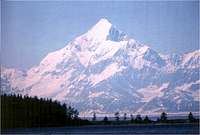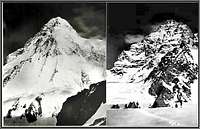RenatoG - Feb 11, 2008 4:34 pm - Voted 10/10
Interesting page but......I don't agree completely with you when you say that "...the Duke of Abruzzi was forgotten by his own fellow country men...". In reality many schools, streets, mountain huts are dedicated to his memory, and even the National Museum of the Mountain bring his name!
Ciao
Renato
Diveria - Feb 15, 2008 3:02 am - Voted 10/10
My compliments...for this good page!
I really like hystoric stuff.
But...I agree with Renato, the "Duca" has noot been repudiated in his country, especially among the Mountaineers his value has always been remembered.
Ejnar Fjerdingstad - Mar 1, 2008 11:13 am - Voted 10/10
Very interesting.I knew of his attempt on K2, and the climbs of Mt. St. Elias and Rwenzori, but it was interesting to read all the details you give of his life. It is a great injustice if he was forgotten, especially as he opened the route to the summit of K2, which the Italians later used on the first ascent in 1954 - an ascent that must rank with that of Everest when one considers the greater difficulty of K2.
RayMondo - Oct 29, 2009 7:14 am - Voted 10/10
Tough ExplorerItaly has bred some outstanding Alpinists and Explorers. It's nice to see this brought to light.












Comments
Post a Comment